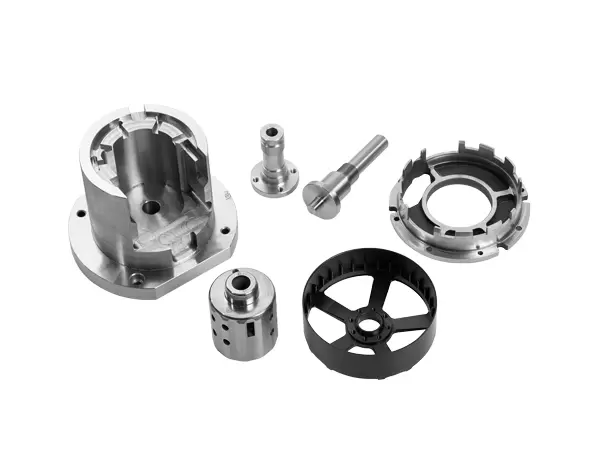Did you know that hank dyeing machines can reduce water usage by up to 50% compared to traditional dyeing methods? With their innovative technology, these machines are revolutionizing the textile industry. From enhanced color consistency to shorter processing times, hank dyeing machines offer a myriad of benefits that are reshaping the landscape of textile production.
The efficiency and eco-friendly nature of hank dyeing machines make them an indispensable asset for textile manufacturers striving to minimize environmental impact without compromising on quality.
Unraveling the Hank Yarn Dyeing Process
Ensuring Even Dye Penetration
Hank yarn dyeing involves dyeing skeins or hanks of yarn, which requires meticulous preparation to ensure even color penetration. Before the dyeing process begins, it's crucial to prepare the hank yarn properly. This includes carefully winding the yarn into a hank and securing it with ties to prevent tangling during dyeing. Proper preparation ensures that the dye can evenly penetrate all parts of the yarn, resulting in consistent and vibrant colors.
Properly prepared hanks also allow for efficient handling during the dyeing process. When hanks are well-prepared, they can be easily loaded onto hank dyeing machines, ensuring smooth operation without any disruptions caused by tangled or improperly wound yarn. This not only saves time but also minimizes potential issues that may arise from poorly prepared hanks.
Preventing Uneven Coloration
Inadequate preparation of hank yarn can lead to uneven coloration during the dyeing process. If there are tangles or inconsistencies in how the skein is wound, certain areas may receive more or less exposure to the dye bath, resulting in variations in color intensity across different sections of the yarn. By taking the time to meticulously prepare each skein before it undergoes dyeing, textile manufacturers can avoid these irregularities and produce high-quality dyed yarn with uniform color distribution.
Moreover, proper preparation contributes to minimizing waste by ensuring that every inch of yarn absorbs an appropriate amount of dye. Wastage due to uneven coloration or inadequately dyed sections is reduced when careful attention is given to preparing hank yarn for the dying process.
Various Types of Hank Dyeing Machines
Overview of Hank Dyeing Machine Types
Hank dyeing machines come in various types, each designed to cater to specific dyeing needs. The most common types include the package hank dyeing machine, vertical hank dyeing machine, and horizontal hank dyeing machine. Package hank dyeing machines are suitable for small-scale production due to their ability to process a limited quantity of yarn at once. On the other hand, vertical and horizontal hank dyeing machines are ideal for larger-scale operations as they can handle a higher volume of yarn.
It's crucial to consider factors such as the scale of production, required processing speed, and the type of yarn being dyed. For instance, if an operation primarily deals with smaller quantities or different colors that need frequent changeovers, a package hank dyeing machine might be more suitable. Conversely, businesses focusing on large-scale production may find vertical or horizontal hank dyeing machines more efficient due to their capacity.
Advantages and Limitations
Each type of hank dyeing machine has its own set of advantages and limitations. Package hanks offer flexibility in handling multiple colors but are limited in terms of batch size. In contrast, vertical and horizontal machines excel in handling larger quantities but may have limitations.
The versatility offered by package hanks is beneficial for businesses dealing with custom orders or small-batch productions where color variations are frequent. However,vertical and horizontal machines shine.
Considering these differences can help businesses make informed decisions based on their specific operational requirements such as batch sizes, color variability demands,and turnaround times.
Considerations for Selectin
Selectinthe Right MachineChoosingthethe Right MachineChoosingeRight Machi ChoosingtherightMachineChoosingghtMachineCg therightMachineChosightheMachineChoheMachineChothineChoosingtherig
When selecting a suitable h ank d yeing machi ne it's vital tto evaluate the production scale, type of yarn, processing speed*, flexibility requireme*
Advancements in Hank Dyeing Technology
Evolution of Technology
Hank dyeing, once a labor-intensive process, has undergone significant technological advancements. Traditional methods involved manually immersing hanks of yarn into large vats of dye liquor. However, the introduction of automated hank dyeing machines has revolutionized this practice. These modern machines are equipped with multiple arms that hold the hanks in place and ensure uniform color absorption.
The use of these advanced machines has significantly reduced the time required for dyeing bulk quantities of fibers. This efficiency not only saves time but also minimizes the consumption of water and chemicals during the dyeing process. The incorporation of precise controls for temperature and agitation further enhances the quality and consistency of dyed products.
Impact on Efficiency and Quality
The impact of technological advancements on hank dyeing is twofold: it improves both efficiency and quality. By automating various stages, such as adding dyes, rinsing, and drying, these machines streamline the entire process while maintaining high standards for colorfastness and overall product quality.
Moreover, modern hank dyeing machines are designed to accommodate different types of materials - from delicate natural fibers to robust synthetic blends - without compromising on color vibrancy or material integrity. This adaptability ensures that manufacturers can achieve diverse aesthetic requirements while meeting stringent industry standards.
Future Trends
Looking ahead, future trends in hank dyeing technology are expected to focus on sustainability and innovation. Manufacturers are increasingly investing in eco-friendly practices by developing machinery that reduces water consumption during operations. There is a growing emphasis on obtaining certification for sustainable manufacturing processes within textile industries worldwide.
In terms of innovation, ongoing research aims to enhance automation features further while minimizing energy usage through improved machine designs. Furthermore, developments in software integration enable real-time monitoring and control over various parameters such as temperature gradients within the vat liquor.
ALEETEX
aleetex@aleetex.com



